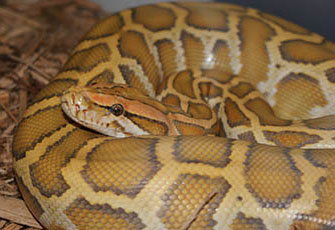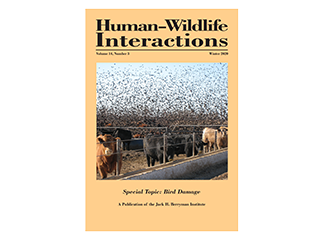Burmese Python
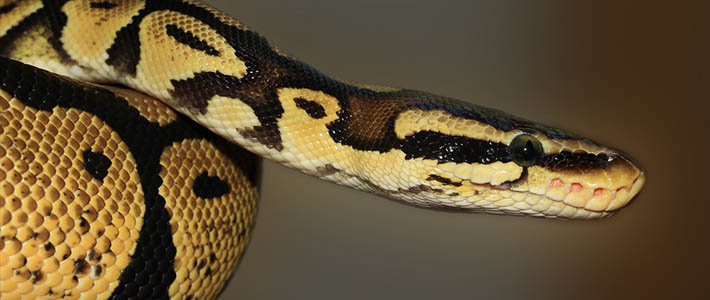
Burmese Python (Python molurus bivittatus)
The Burmese python (Python molurus bivittatus) is native to Southeast Asia and is considered to be one of the top five largest snakes in the world. It was imported to the United States via the exotic pet trade and established populations were first reported in 2000 in Florida. Their establishment is likely due to the destruction of a python breeding facility by Hurricane Andrew in 1992, as well as due to the sheer size these snakes are capable of reaching.
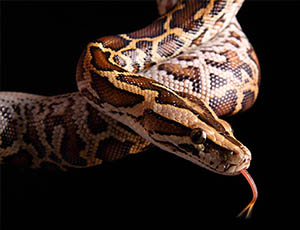
This allows them to escape the confinement (an unintentional release) of typical cages and aquariums that pet owners purchase with the snake; in combination with the intentional release that occurs when owners can no longer care for such a large snake. They soon outgrow their terrariums or other holding facilities and pet owners are then forced to release them into the environment. These snakes evolved in a tropical, semi-aquatic environment, so they were likely able to adapt to the Florida Everglades ecosystem fairly easily.
These adaptations made the introduction to the Everglades a trivial transition. Without any natural predators they were able to quickly become established and begin exploiting the native fauna of the Everglades. One of the most notable concerns are their impacts to the food web dynamics and competition with, as well as predation on the American alligator.
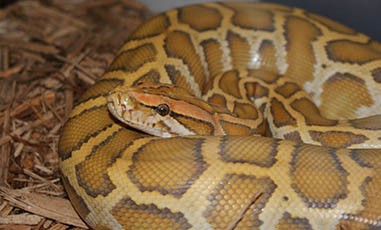
This shift in predator-prey dynamics has the potential to completely alter the composition of an ecosystem by causing incipient extinctions of native wildlife, influencing vegetation structure and arrangement, influencing the assemblage of native species in the landscape, among many other potential impacts. In 2012, a report stated that in areas where the snakes are well-established, foxes and rabbits “have disappeared.” Sightings of raccoons are down 99.3%, opossums 98.9%, and white-tailed deer by 94.1%.
Things You Need To Know
- Burmese pythons are NON-venomous
- They are a constrictor species
- Labeled by the U.S Dept. of Interior as “injurious wildlife”
- All are illegal to transport, import, and export in the U.S.
- Capable of reaching up to 18 feet in length and over 100 lbs.
- Primarily nocturnal
- Excellent swimmers (can stay submerged up to 30 minutes)
- Tend to be found in the cover of underbrush, hollow logs and stumps, and holes in riverbanks
- Breed in early Spring, laying clutches of eggs up to 12-36 in March-April
- Typically feed on appropriately-sized mammals and birds, but small pets such as dogs and cats are also under threat
Additional Resources
- http://www.invasivespeciesinfo.gov/animals/python.shtml
- http://www.edis.ifas.ufl.edu/uw286
- http://www.aphis.usda.gov


